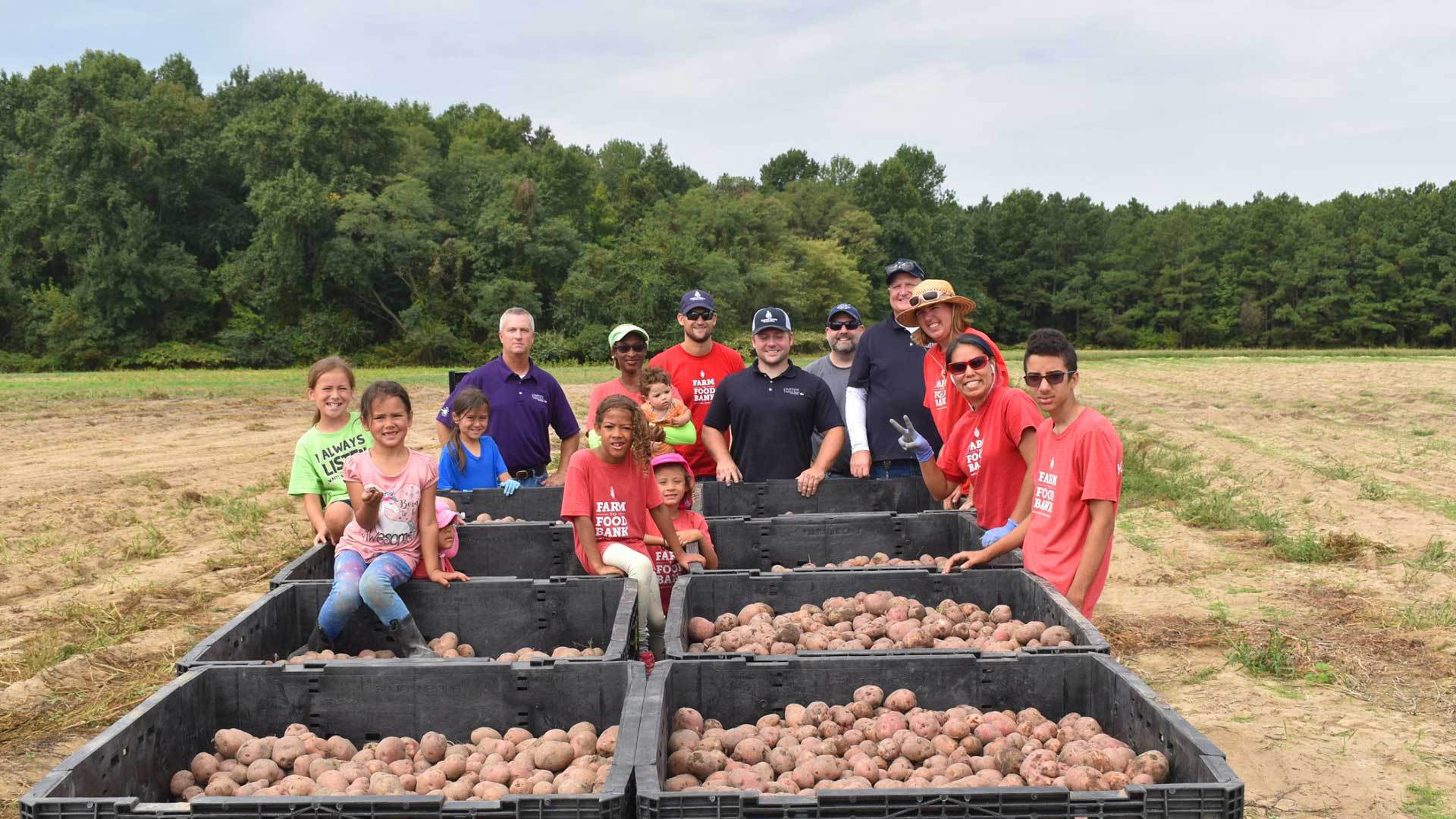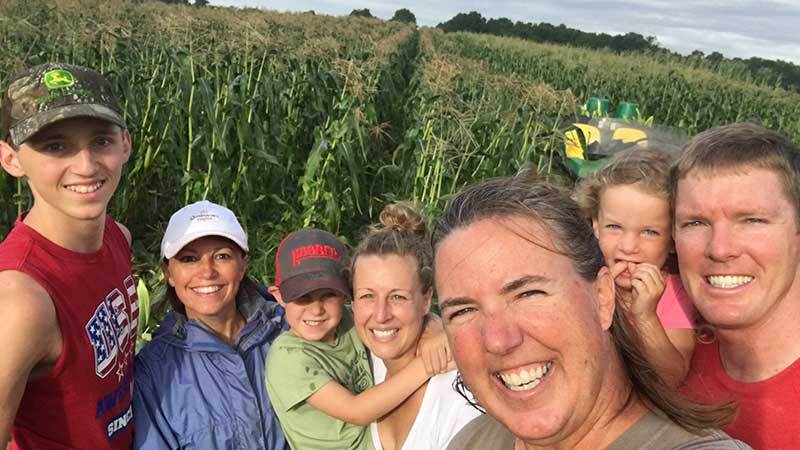Gleaning Wisdom: How Maryland’s Resilient Farmers are Weathering COVID-19

The Hearty Farmers of Maryland
The outbreak of COVID-19 has certainly changed daily life for most of us, including the farmers who so generously support our Farm to Food Bank Program. However, they were already well-positioned to continue working at their “home offices,” the fields and orchards that supply hungry Marylanders with millions of pounds of fresh, nutritious produce.
As the Farm to Food Bank Coordinator, I have been reaching out to our network of more than 50 farmers to make sure they will be ready to not only continue their regular partnership with us, but help meet the increased need brought on by the devastating effects of COVID-19. I am happy to share that through my discussions with these farmers, I am hopeful that contracts will be met, and optimal amounts of varied fresh produce will be available for food-insecure Marylanders as it is every year.
You may see stories on the news about farmers having to plow their fields under, but I want to reassure you that this is not presently happening in Maryland. Those farms are mainly in Arizona, California, and Florida – three states that are raising food to feed people nationally. Here in Maryland, most of our farms are more focused on fulfilling the local need.
2020 marks ten years since the Maryland Food Bank established the Farm to Food Bank Program, and the importance of the farming community to our state’s ability to thrive has never been greater.
Business as Unusual
The Farm to Food Bank Program and the farms we partner with are as essential as ever during this time, as our emergency food distribution programs rising to the challenge in response to the pandemic. While it remains our priority to safely feed as many hungry individuals and families as possible, it is equally important to consider the quality of food they are consuming. Many households depend on us to help supply a well-balanced, healthy diet, and we refuse to let them down.
Thankfully, farmers are long-term planners. This consistency is part of what has made the Farm to Food Bank Program so successful. We know our farm partners will be there for us year in and year out, which means hungry Marylanders can count on a steady supply of fresh produce.
Since much of Maryland’s economy has slowed significantly due to state restrictions, our Farm to Food Bank partners are facing some challenging decisions given that they don’t know what the supply chain will look like when it is time to harvest. But they have been planting regularly with the hopes that by the time the growing season is in full tilt, markets and selling outlets will be back open and thriving.

Future Volunteer Gleaning Opportunities
Despite the uncertainties surrounding the COVID-19 pandemic, I am always on the lookout for volunteers to help on our farms, especially on the mid-Eastern Shore. It is important to note that the crops that are receiving a lot of attention in the news (e.g. squash, green beans, and sweet corn) won’t be ready for harvest until mid-June in Maryland; therefore, we have planned gleaning and harvest events accordingly.
The Farm to Food Bank program is hopeful to host weekly harvest opportunities every Saturday, starting in mid-June, but we encourage you to check our website regularly. These volunteer opportunities will last until late October. No matter the time of year, or location of the gleaning, we will continue to follow guidelines to ensure the health and safety of our volunteers, and Farm to Food Bank partners.
Swann Farms in Owings, Maryland (Southern Maryland) is raising two acres of sweet corn just for MFB and will need volunteers to pack corn right after July 4. Later in July and into August, we’ll need lots of extra hands to help harvest nearly 100,000 pounds of red potatoes from Black Gold Farms.
I love interacting with fresh faces who share a similar affinity for farming, agriculture, and helping others. I urge all who are interested to sign up to volunteer for a day in the field with me and some of Maryland’s most dedicated farmers and volunteers this summer.
Maryland has a long and illustrious agricultural history, and in fact, it is Maryland’s #1 industry! I’m so proud to see our farmers staying resilient in the face of crisis. If we all pull together, we can and we will get through this, continuing our mission of feeding people, strengthening communities, and ending hunger for more Marylanders.
We Need Your Help
Programs, campaigns, and workforce development at the Maryland Food Bank has always relied on the philanthropic support of charitable individuals like you.
Much like our food distribution efforts, workforce development programs like FoodWorks at the Maryland Food Bank rely on generous donations of money and time.







